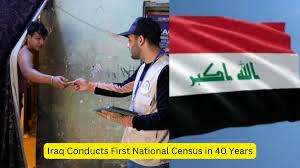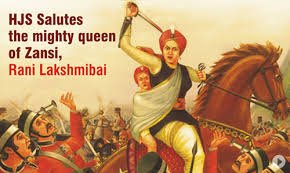The Lifeline of Karnataka: River Kaveri
Introduction
River Kaveri, also known as the Cauvery, is famously referred to as the lifeline of Karnataka. Originating from the Brahmagiri Hills of the Western Ghats in the Coorg district, this river traverses a distance of 765 kilometers through Karnataka and Tamil Nadu before emptying into the Bay of Bengal. Kaveri is not only a major water source but also holds significant cultural and historical importance in the region.
Geographic Journey of Kaveri
The Kaveri river originates at Talakaveri in the Brahmagiri range of the Western Ghats. It flows southeast through the states of Karnataka and Tamil Nadu, covering a diverse terrain and supporting agricultural activities along its course. The river is crucial for irrigation, drinking water, and hydroelectric power generation, making it indispensable for the sustenance of the region’s population and economy.
Cultural and Religious Significance
Kaveri is revered in Hindu mythology and is often associated with various legends. It is worshipped as a goddess and is considered sacred by the people living along its banks. The river is mentioned in ancient scriptures and has been an integral part of South Indian culture and tradition. The famous festival of Kaveri Sankramana, celebrated at the source of the river in Coorg, marks the beginning of its journey.
Economic Importance
The river supports a multitude of economic activities in Karnataka and Tamil Nadu. Agriculture is the primary beneficiary, with the fertile plains of the Kaveri delta being one of the most productive agricultural regions in India. The river also supports fisheries and provides water for several industries. Additionally, the hydroelectric projects on Kaveri, including the famous Shivanasamudra Falls, contribute significantly to the power supply in the region.
Environmental Challenges
Despite its importance, the Kaveri river faces several environmental challenges. Pollution from industrial waste, agricultural runoff, and domestic sewage poses a significant threat to its ecosystem. Over-extraction of water for irrigation and urban use has led to a decline in its water levels, affecting the river’s health and sustainability. Conservation efforts are needed to protect and rejuvenate this vital water resource.
Conclusion
River Kaveri is undeniably the lifeline of Karnataka, playing a pivotal role in the state’s socio-economic and cultural fabric. Ensuring its preservation and sustainable use is crucial for the continued prosperity of the regions it nourishes.

Why This News is Important
Significance for Students
Understanding the importance of River Kaveri is essential for students preparing for government exams as it is a key topic in geography and environmental studies. Knowledge about major rivers and their roles in regional development is often tested in competitive exams.
Economic Impact
The economic contributions of River Kaveri to agriculture, industry, and power generation highlight the interconnectedness of natural resources and economic development. This understanding is crucial for exams focusing on economics and regional development.
Cultural Relevance
River Kaveri’s cultural and religious significance provides insights into the traditions and practices of South India. This aspect is important for exams that include questions on Indian culture and history.
Environmental Concerns
The environmental challenges faced by River Kaveri underscore the importance of sustainable development and conservation efforts. Awareness of these issues is critical for exams related to environmental science and policy-making.
Historical Context
Ancient Reverence
River Kaveri has been revered since ancient times, with references in several Hindu scriptures, including the Puranas. It has been central to many South Indian kingdoms, such as the Cholas and the Vijayanagara Empire, which relied on its waters for agriculture and trade.
Colonial Era
During the British colonial period, the Kaveri river basin became a focal point for irrigation projects, which led to the construction of dams and canals. These developments significantly boosted agricultural productivity in the region.
Post-Independence Developments
Post-independence, the river has continued to be a critical resource for Karnataka and Tamil Nadu. Various projects have been undertaken to harness its waters for irrigation, drinking water, and power generation.
Key Takeaways from “The Lifeline of Karnataka: River Kaveri”
| S.No | Key Takeaway |
|---|---|
| 1 | River Kaveri is known as the lifeline of Karnataka, originating from the Brahmagiri Hills. |
| 2 | It supports agriculture, drinking water supply, and hydroelectric power generation in Karnataka and Tamil Nadu. |
| 3 | The river holds significant cultural and religious importance in South India. |
| 4 | Environmental challenges like pollution and over-extraction threaten the river’s sustainability. |
| 5 | Understanding the importance of River Kaveri is crucial for students preparing for government exams. |
Important FAQs for Students from this News
1. Why is River Kaveri called the lifeline of Karnataka?
River Kaveri is called the lifeline of Karnataka because it is a major source of water for drinking, agriculture, and hydroelectric power generation, supporting the livelihoods of millions of people in the region.
2. Where does River Kaveri originate?
River Kaveri originates from the Brahmagiri Hills in the Coorg district of Karnataka.
3. How long is the Kaveri river?
The Kaveri river stretches for approximately 765 kilometers.
4. Which states does the Kaveri river flow through?
The Kaveri river flows through the states of Karnataka and Tamil Nadu.
5. What are the main uses of the Kaveri river water?
The main uses of the Kaveri river water include irrigation, drinking water supply, hydroelectric power generation, and supporting fisheries.
Some Important Current Affairs Links

















